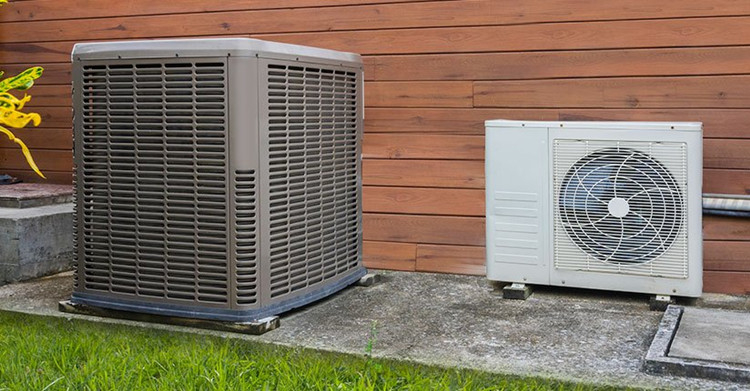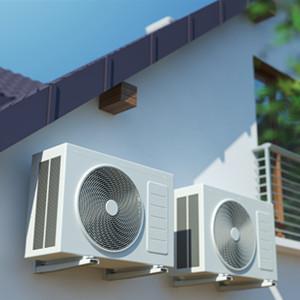Air to Air Heat Pump vs Air to Water Heat Pump
The adoption of renewable energy has been rapid over the past few years. Alternative energy technologies are now central to our daily lives and no longer just a scientific term for the future.
Now, due to the sharp rise in the acceptance of these environmentally friendly energy sources, manufacturers have come up with many solutions, especially heat pumps, which are an excellent option for home heating.
They provide one of the cheapest and most energy-efficient ways of cooling and heating homes, especially those with moderate cooling and heating needs. They are also ideal for renovations and new builds. So whether it's a new home or you're renovating an old furnace, or you want to increase your home's energy production, this guide outlines the two main types of heat pumps to help you make your decision.
So, which one is better, air source heat pump or air source heat pump?

Air source heat pump system and its features
Air source heat pumps can be used as water heating as well as cooling and heating air systems. This allows the use of fewer devices, resulting in lower power costs. But are they beneficial, or would it be better to have an air-to-air system?
The function of an air-to-water system is to capture outdoor air and convert it into the water needed to condition the home or office. Most outdoor units are located next to the house, while indoor units are located inside the house.
One of the main benefits you get from an air-to-water system is that you don’t have to install another system to heat the water. Essentially, what will happen is that your air pump will recycle all the heat within the air pump to produce hot water. This means you don’t have to worry about expensive energy bills, as the system uses the by-products of its cooling and heating functions to produce warm water.
Another ideal feature of an air source heat pump is that it is a one-time installation, which will significantly reduce your operating and utility costs compared to a traditional heat pump or water heater.
That said, these types of systems are designed to replace an entire central heating system; however, some hybrid systems can be used in conjunction with a boiler. Additionally, while your current radiator can be used, in most cases you will need to replace it with an underfloor heating radiator or a larger radiator.
This is because they are only effective for low-temperature heating needs that are designed to transfer heat over a large surface area. Because of these changes and additional equipment costs, air water pumps are not cheap. So if you are retrofitting an old energy source you may want to reconsider, but if you are building a new property or undertaking a major renovation it can significantly reduce installation and operating costs.
Other features include:
1. You can reduce your energy bills if you replace your old electric heating system
2. Potential revenue (some governments offer Renewable Heat Incentives (RHI)
3. Providing heat and water to the house
4. Low maintenance cost
5. Easy to install
6. Extensible and can be designed to work together with other related systems or independently.
Air-to-air heat pump system?
Air-to-air heat pump systems also work by capturing heat from the outside environment. The heat is then amplified by a compressor and pumped into the house. However, unlike air-to-water systems, which transfer heat to the central heating system and then distribute it through underfloor heating or radiators, air-to-air systems release hot air directly from the system.
Now, with an air-to-air system, you will need to install ducting around the house to allow air to circulate. Ducts work in the same way as an underfloor system or traditional radiator.
That said, air-to-air systems are much cheaper. A complete unit can be installed in an average sized house or property to cover all your heating needs for less than $2000. Additionally, you don’t need to make major changes to your property, and installation is usually unobtrusive and quick.
These units also have better heating and cooling efficiencies than air-to-water units, with some units as high as 5.5. Additionally, there are a number of options including a central VRV/VRF system that can provide heating and cooling when needed.
The system can be used with other existing heating systems, meaning users can use it according to their needs. Additionally, by evaluating your energy usage, you can easily determine when times are more effective for different purposes.
That said, there are some disadvantages to using an air-to-air heat pump compared to an air-to-water heat pump. For example, you will need another hot water system because it cannot provide hot water. Whether you plan to mount indoor equipment on the ceiling or on the walls, indoor equipment requires more space.
Additionally, air-to-air systems generate unique types of heat. Although they heat the house faster, there is always some form of noise and air movement.
Features
1. Air-to-air
1). Lower installation cost. It depends on the pipeline cost
2). It can be used for cooling and heating properties
3). Heating speed is faster than radiator, and has a powerful regulating effect on the house
2. Air to water
1). Renewable heat incentive funding is available in certain circumstances to help pay for installation costs
2). It can be used as central heating system as well as hot water
3). In most cases it can be connected to under the floor or to an existing radiator
Bottom line
Ultimately, the right type of heat pump comes down to your personal preference. The system development costs are almost the same. This is mainly because your charges may increase under certain conditions and then decrease under others, depending on the system you choose.
So if you lose one advantage by choosing an air-to-air or air-to-water system, you gain others in another way. Everything depends on how you will use the device.
Get more help
Leomon is a professional heat pump manufacturer. If you need to purchase a heat pump please contact us. Our heat pump experts will give you the best advice.





